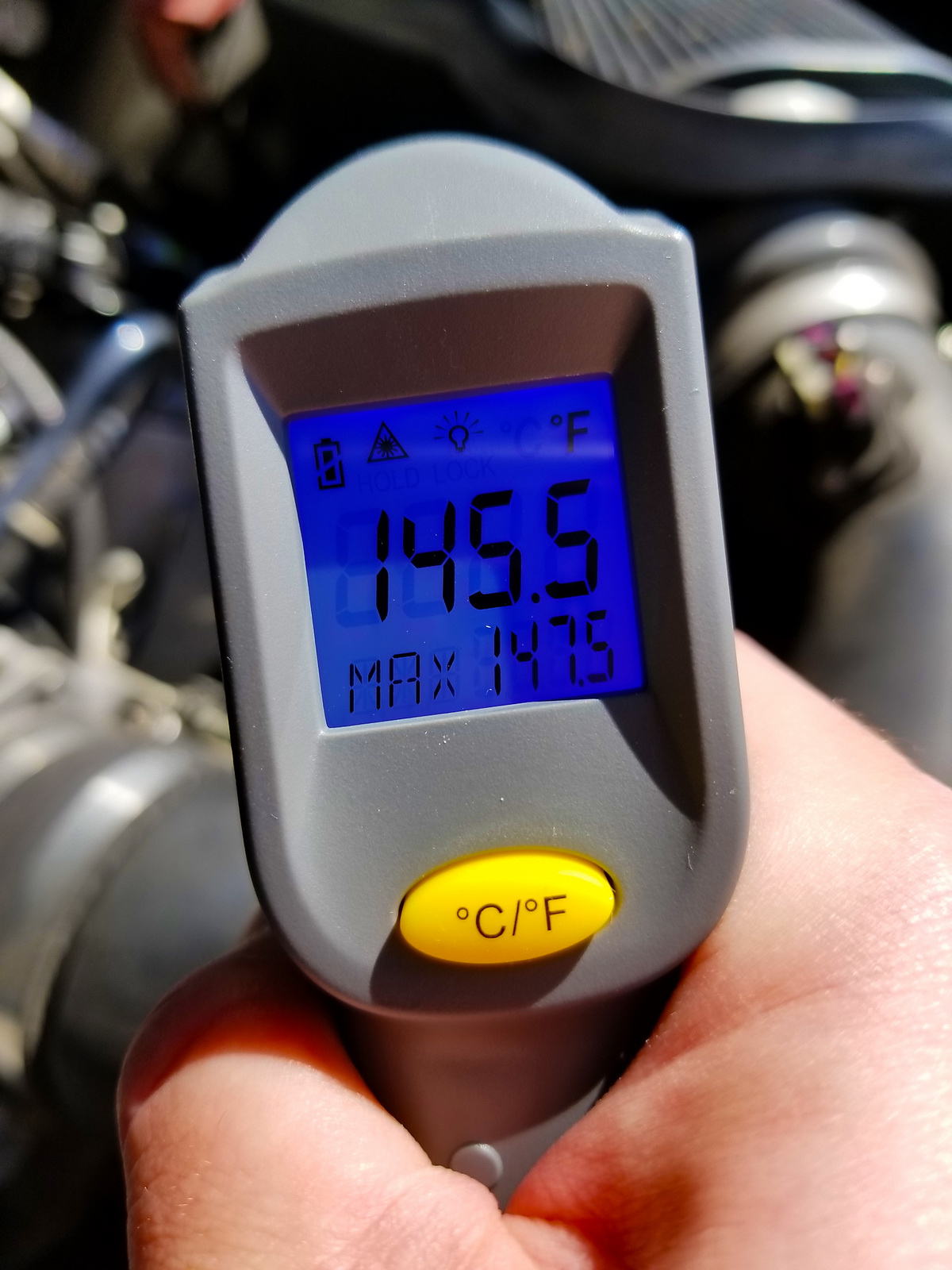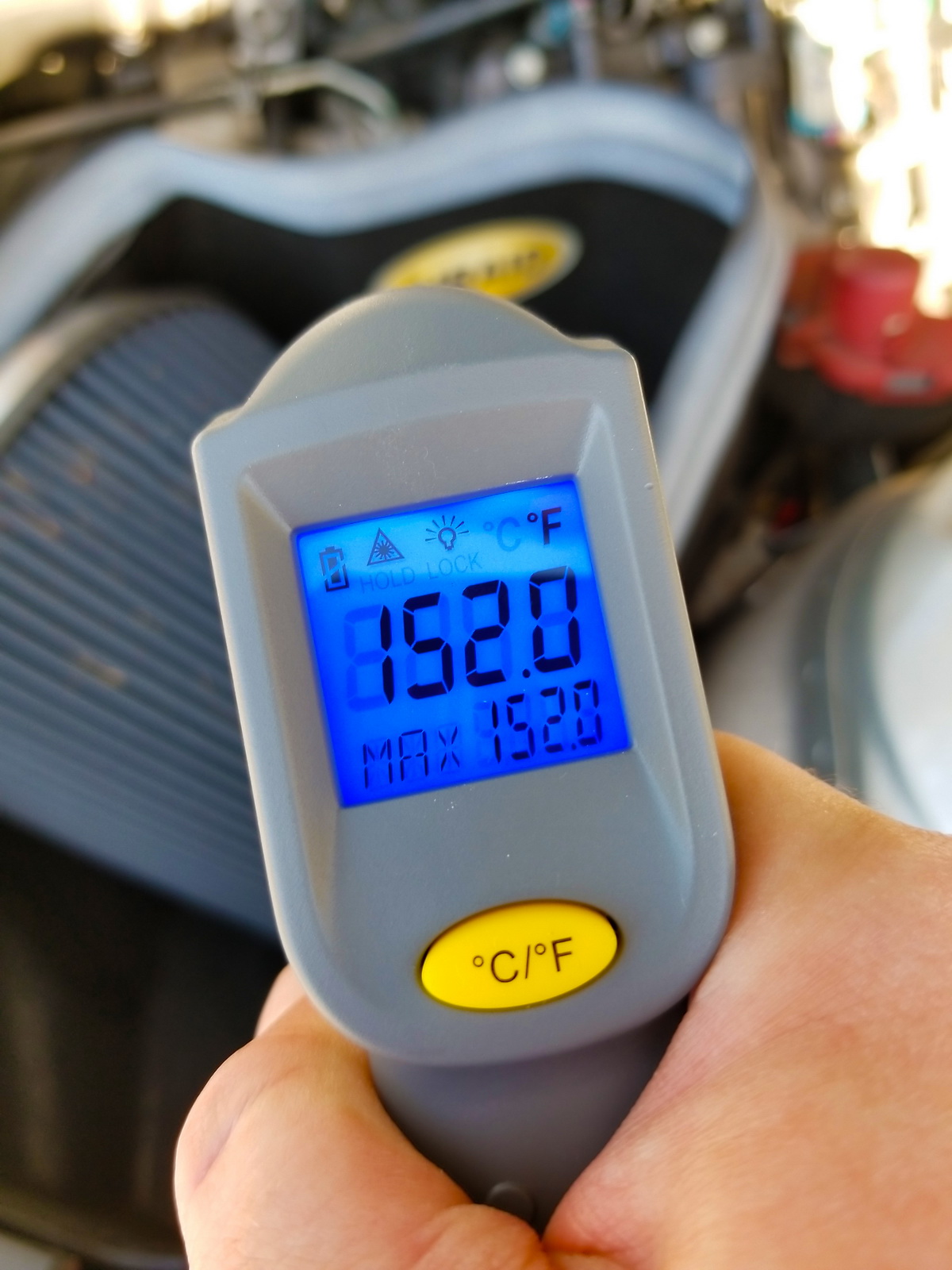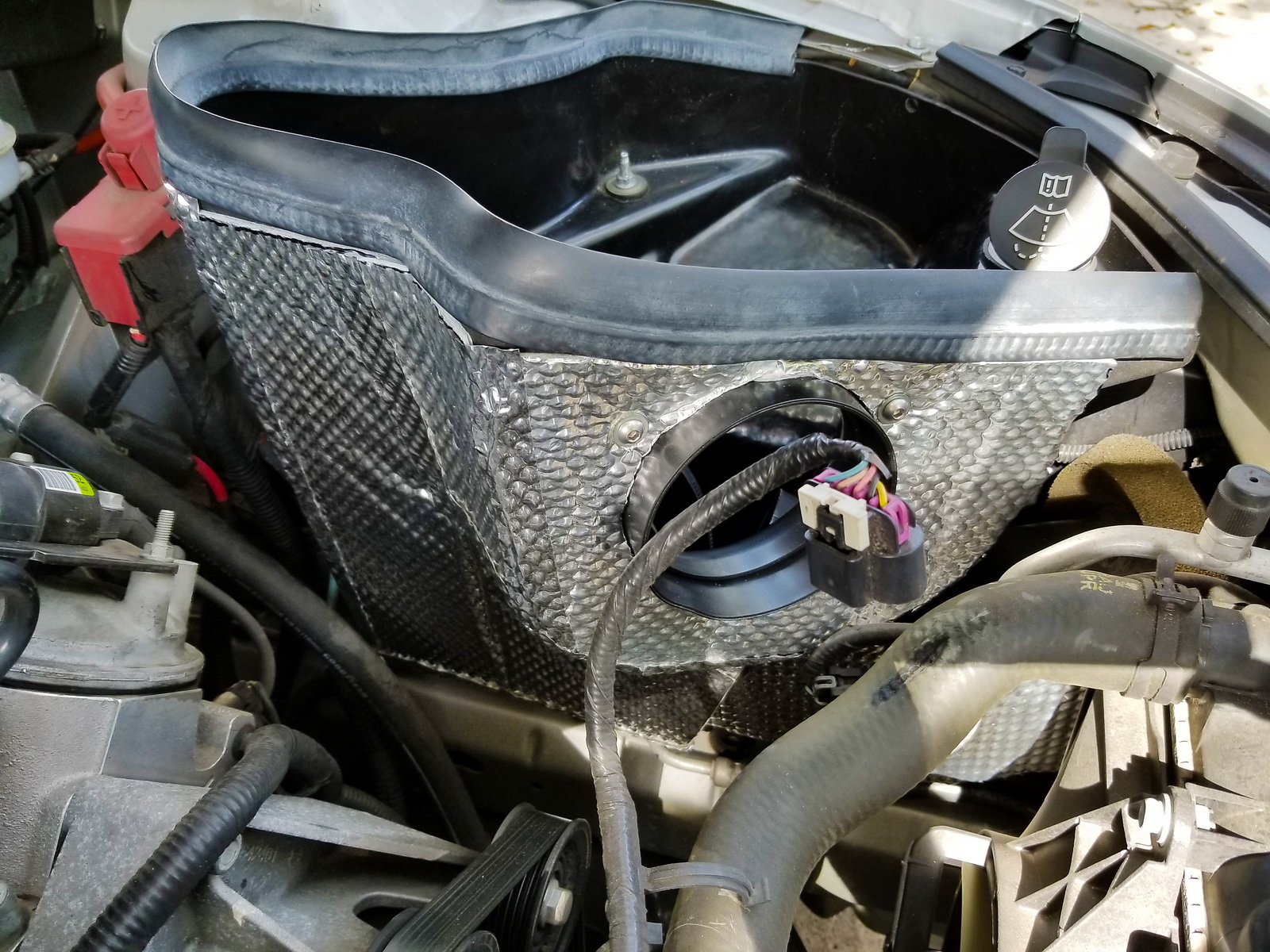When it comes to performance, cool air is one of the largest contributing factors. Cooler air is more dense meaning that more oxygen is sucked into the cylinders during induction. The more air in the cylinders, the more power an engine can make. With fuel injected engines, cool air also affects how the computer controls the ignition system (that’s where cold air intake heat shields come into play but we’ll get to that later!)
All modern fuel injected engines have air intake temperature sensors. With these sensors, the temperature of the air entering the engine is measured, and the ECM then makes the necessary adjustments to ignition timing, air/fuel ratio, and more to keep the engine operating within its set parameters. As you can imagine, warm air effects this measurement. When air intake temps get too warm and there’s a risk of detonation, the ECM will reduce ignition timing to guard against that occurring. Just one degree of reduced timing can cost you 10-12 horsepower — that matters when you need power fast!
But wait, that’s what all these cold air intake kits are for, right?
Where Cold Air Intake Heat Shields Come Into Play
Technically, yes, but not everyone has a cold air intake installed on their vehicle. Not to mention that even with one of these systems installed, when it’s summertime and the air is already hot, underhood temperatures radiating from the engine can heat the cold air intake system. That means that heat will be transferred to the air passing through the system on its way to the engine, resulting in warm air where you want it least.
That’s when it’s time to look at cold air intake heat shielding (be it O.E. or aftermarket). To do that, you’ll need to break out some of our multi-purpose, versatile HP Sticky Shield™ thermal barrier air intake heat shield material.
We took our test subject, a 2013 Camaro SS with an LS3 (no cold air intake heat shielding installed), for a drive around town. After about 15 minutes, we parked and immediately grabbed the temp gun to see how hot our airbox was getting without an air intake heat shield. On the outside facing the engine, the surface measured 145.5 degrees F.

On the filter side of the box, we recorded a temp of 152 degrees F. That’s a pretty hot, and that also means that the air going past the surface of the engine before entering the air filter is going to pick up and absorb some of that heat, raising the air intake temperature. Keep in mind that these temp readings were taken in Florida in January, so we’re not even the dog days of summer yet.

Installing a Cold Air Intake Heat Shield
This is where heat shield products for your car come in. To make installing our auto heat shield easy, we removed the Airaid airbox and cleaned it with some Simple Green degreaser.

Besides applying a cold air intake heat shield to the airbox itself, we also plan to install a Sticky air intake heat shield on the air tube feeding the airbox. HP Sticky Shield™ is a great cold air intake heat shield thermal barrier. It’s extremely versatile thanks to its high-temp adhesive backing and ability to be trimmed with a pair of scissors to fit just about any shape. For this project, we used some tracing paper to figure out the shapes we’d need, cut them out of our roll of HP Sticky Shield™, then adhered them to the airbox after we cleaned it with some Simple Green degreaser.

Once our cold air intake heat shield was applied and everything was back together, we took the Camaro out and drove it for the same amount of time we did for the baseline, watching the temp gauge until it reached its normal point. We then parked and immediately broke out the temp gun to take some readings.

ABOVE: Once everything was back together, we took the Camaro out and drove it for the same amount of time we did for the baseline, watching the temp gauge reach its normal point. Then we parked, and immediately broke out the temp gun to take some readings. Demonstrating how efficient the Sticky Shield is at deflecting heat, we measured the temp on the Sticky Shield’s surface of 196.5 degrees F. Our baseline was 145.5 degrees F on the side of the air box.

ABOVE: Once we had everything reinstalled, we took the car out for a drive and took some new temperature measurements. On the filter side of the box, we measured 87.5 degrees F. That’s a drop of 64.5 degrees F. That’s 64.5 degrees less heat that can be transferred to the air running through the filter box before it enters the engine.
We first measured the temp on the Sticky air intake heat shield’s surface for a reading of 196.5 degrees F. We then measured the filter side of the box and got a reading of 87.5 degrees F. That’s a drop of 64.5 degrees F! That’s 64.5 degrees less heat that can be transferred to the air running through the filter box before it enters the engine which means more pick up and power for when you need to get up and go.
Looking for other automotive heat solutions to make sure your vehicle is as efficient as possible? Search our collection of automotive heat shields for the product that’s right for you today at Heatshield Products!

